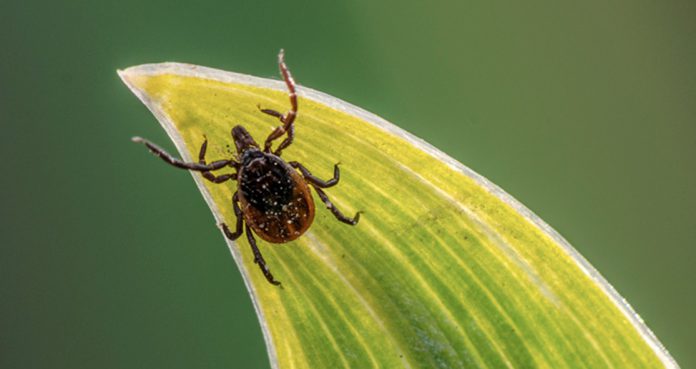West Michigan public health officials have been urging people to get themselves protected from black-legged tick that can cause Lyme disease. The black-legged ticks, or deer ticks, can carry Lyme disease, which are out during late spring to early summer.
Kent County Health Department epidemiologist Brian Hartl said the nymphs are currently out feeding and looking for human blood. He explained that they are too tiny to find, even when they are on the body.
Hartl said, “It’s easy to come home and see an adult tick on your clothes or embedded into your skin. But nymphs are a little bit smaller, so it takes a little bit more effort to find them on your clothes or on your pet.”
The black-legged ticks thrive in the ongoing wet weather and warm temperatures. So, public health officials in several counties have been encouraging people to get checked for ticks after spending time outdoors.
The epidemiologist said, “In your hair, behind your ears, in your belly button, behind your knees, so they like to crawl into those areas that are secluded and darker.”
The experts said that the best way to get rid of a tick from the skin is to catch it with a pair of tweezers and pull it straight up. If the deer tick remains in the skin, there is an increased risk of infection.
Hartl said, “The thing about Lyme Disease is the tick has to be embedded in your skin for about 36 to 48 hours. So, if you do a good tick check when you come home after you’ve been outside, you find that tick and remove it right away, the risk should be very low.”
Pets, especially dogs and cats, can be more vulnerable to ticks. The state epidemiologist said, “Ticks are, you know they need to feed. So they’ll be waiting in the woods to latch onto anything, an animal, a dog, a person.”
Signs and symptoms of Lyme disease include a headache, fever with chills, body aches, and a skin rash.
Hartl mentioned, “The rash is the thing you look out for. It’s like a, it’s called a ‘bull’s-eye’ rash, so it kind of starts as a rash and then it clears, so it looks like a bull’s-eye.” He suggested the best way to prevent the infection is to wash the clothes with permethrin and wear an insect repellent that is EPA-approved.























